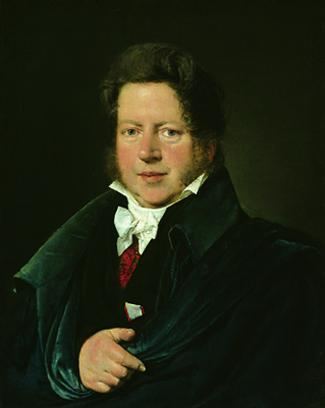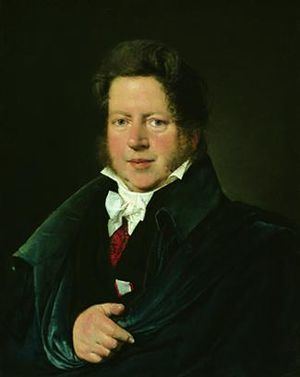Name Peter Brondsted | ||
 | ||
Peter Oluf Brøndsted (17 November 1780 – 26 June 1842), Danish archaeologist and traveller.
Biography

Brøndsted was born at Fruering in Jutland. After studying at the University of Copenhagen (initially majoring in theology but moving to philology from 1802 onwards) he visited Paris in 1806 with his friend Georg Koës. After remaining there two years, they went together to Italy. Both were zealously attached to the study of antiquities and the tastes and interests they held in common led them, in 1810, to join an expedition to Greece with Otto Magnus von Stackelberg, Carl Haller von Hallerstein, the German painter Jakob Linckh, and the then Austrian consul in Greece George Christian Gropius. Unexpectedly, the following year, Koës died on Zante at the age of 29 of pneumonia. The group went its separate ways in order to carry out excavations at different places. Whilst one uncovered the Temple of Zeus on Aegina and the temple of Apollo at Bassae in Arcadia, Brøndsted and Linckh in the winter of 1811/12 led the excavations of the shrine of Apollo at Karthaia on Kea. Brøndsted was the first Dane who was involved in archeological work in Greece.

After three years of active researches in Greece, Brøndsted returned to Copenhagen in 1813, where, as a reward for his labours, he was appointed extraordinary professor of Greek and philology in the university. He married Frederikke, Koës's sister, who died after the birth of their third child. During these years, Brøndsted gathered and organized the notes and materials he had brought out of Greece. His lectures awakened great interest in many students, who even after his death sent out even more Danish expeditions to the Mediterranean world under his successor Ussing (Lindos on Rhodos).
However, as he began to arrange and prepare for publication the vast materials he had collected during his travels, he found that Copenhagen did not afford him the desired facilities, and so he exchanged his professorship for the office of Danish envoy at the papal court in 1818, and took up residence in Rome. In 1820 and 1821 he visited Sicily and the Ionian Islands to collect additional materials for his great work.
In 1826 he went to London, chiefly with a view to studying the Elgin Marbles and other remains of antiquity in the British Museum, and became acquainted with the principal archaeologists of England. From 1828–1832 he resided in Paris, to superintend the publication of his Travels, and then returned to Copenhagen on being appointed director of the museum of antiquities and the collection of coins and medals. In 1842 he became rector of the university; but a fall from his horse caused his death on the 26 June.
His principal work was the Travels and Archaeological Researches in Greece (in German and French, 1826-1830), of which only two volumes were published, dealing with the island of Ceos and the metopes of the Parthenon.
